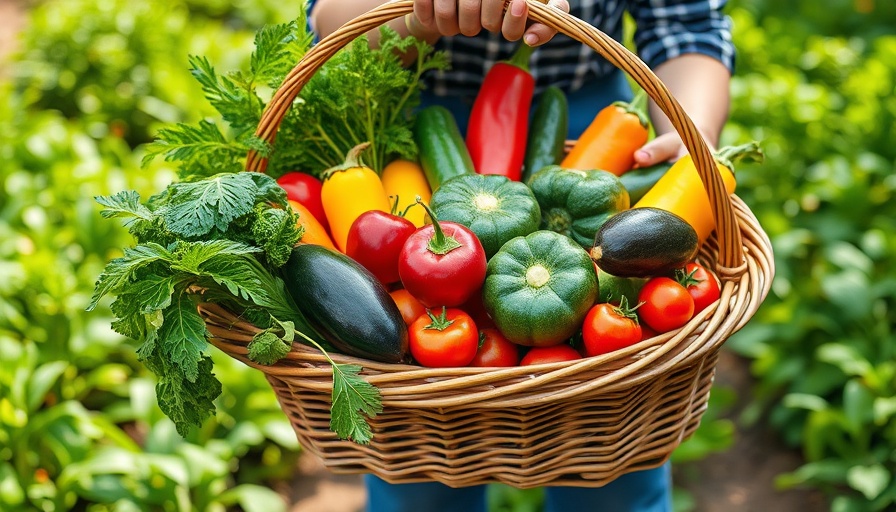
Embrace the Fall: Timing Is Everything for Your Garden
As summer comes to an end, many gardeners face the bittersweet farewell of their beloved warm-season crops. However, with the right timing and knowledge, transitioning to a successful fall garden can be incredibly rewarding. Understanding your local climate, especially the first anticipated frost date, is vital for ensuring your fall crops flourish.
The Best Vegetables for Autumn Harvests
Choosing the right vegetables for your backyard garden is key to enjoying fresh, nutritious produce well into the cooler months. Root vegetables such as carrots, beets, and radishes thrive as the days shorten and temperatures drop.
Asian greens like bok choy and broccoli also shine in the fall garden, offering quick cultivation and rich culinary possibilities. Cold-hardy varieties, such as collards and kale, not only withstand frost but also gain sweetness and flavor post-frost. For those eager for fall gardening in Muskegon, selecting the right crops tailored to your climate and season can yield bountiful harvests.
Using Frost Dates to Guide Planting
A crucial aspect of planting your fall garden is knowing your average frost date in Muskegon. This information allows gardeners to determine when to sow seeds or transplant seedlings. For example, if your frost date is set for October 15th, crops that mature in about 60 days should be planted by mid-August to ensure a successful harvest.
Some gardeners may even want to consider successively sowing warm crops before the chilly conditions set in, which can maximize your growing potential. Each vegetable has different maturity rates; hence, careful selection can lead to staggered harvests and continual yields.
Maximizing Your Garden Space for Fall
As you prepare for your fall planting, consider enhancing your space with effective garden design. Perhaps constructing outdoor soil beds or elevated planter boxes can better utilize your yard and improve drainage. Building a composting barrel can also add valuable nutrients to your garden while reducing waste.
Permitting enough sunlight for each crop is essential. Designing your planting rows using vertical space—like planting taller crops alongside shorter ones—will make your garden more efficient. Don't forget about irrigation; automated watering hacks can help maintain the right moisture levels as temperatures drop.
Celebrate the Fall Harvest
Once you’ve planted, there’s nothing like the anticipation of harvesting your fall garden's bounty. Cool-weather crops present a unique opportunity not only to extend your gardening season but also to discover new flavors and textures in your meals. From hearty soups made with squash and roots to stir-fries featuring your fresh bok choy, the culinary possibilities are endless.
Ultimately, planning and careful timing can lead to a successful fall garden. Embrace these last days of summer as a bridge to fresh start with your fall crops.
Take Action Now!
As you finalize your fall gardening plans, consider reaching out to your local experts for assistance. Your trusted lawn care and property management company, Norther-LawnCare.com, can help you prepare your outdoor spaces for the upcoming season. Don't wait—give Everett Lucas a call at 231-450-3414 today!
 Add Row
Add Row 
 Add
Add 


Write A Comment